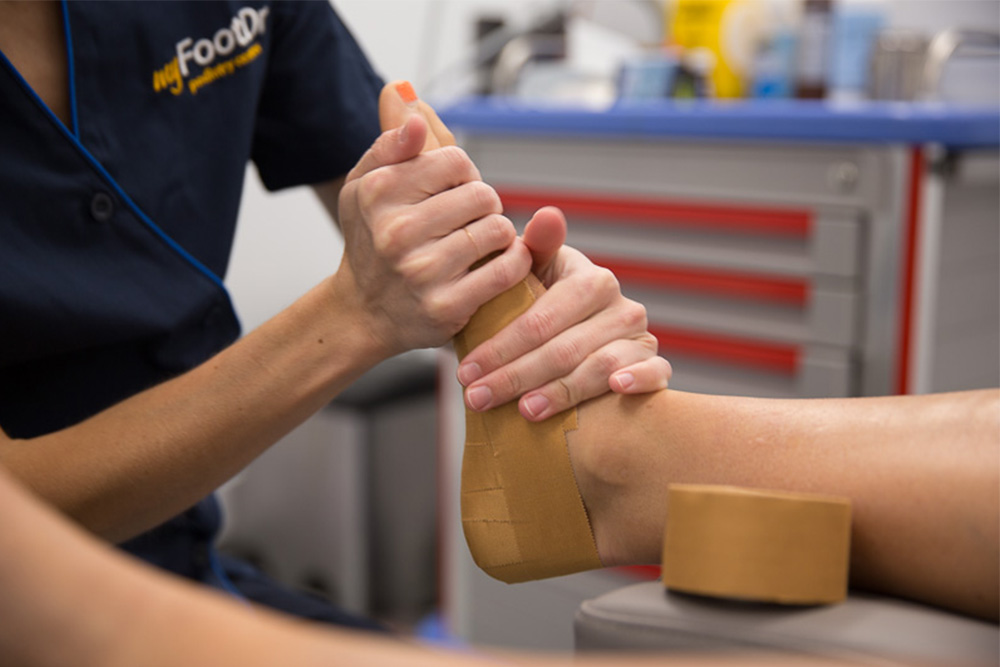

Strapping can give support to and pain relief from many foot, ankle, knee and leg problems – when it’s applied correctly, that is.
Our podiatrists use strapping as an effective part of treating muscle, ligament and joint injuries, especially in their initial painful stages, and to help prevent re-injury during sports or physical activity before you’ve regained full strength and function.
With a little training, you can become more proficient at applying strapping tape yourself. Ankle strapping, one technique of which is demonstrated in the video below, can be very beneficial for both injury prevention, and after an injury has occurred for support and stability. Injuries to the supporting ligaments of a joint will make the joint less stable until effective strengthening, stretching and rehabilitation has been completed, so strapping is a great way to add extra stability and support until this time. If you have a history of recurring ankle sprains, we recommend strapping your ankle during sports, physical activity, and any activities on uneven ground that may put you at risk of another sprain.
Foot strapping can be useful for plantar fasciitis, ligament damage, tendonitis, heel spurs and many other conditions.
How to strap to help prevent ankle sprains (inversion)
During your appointment with our podiatrists, if your injury or problem can benefit from strapping, we will apply your strapping tape and teach you the best technique so you can continue to do it from home.
FAQs
Should you strap your ankle after you have rolled it?
Generally, yes. Strapping your rolled ankle can provide support and stability when applied correctly. This can prove useful during the healing process and helps prevent further damage. Please note that the video above demonstrates the correct technique for an inversion ankle sprain – where your foot twists inwards and your ankle rolls outwards. If you have suffered an eversion ankle sprain, your technique will be different.
If you are concerned about your ankle recovery you should contact your podiatrist to get your injury properly assessed and strapped.
How long do I leave the strapping tape on for?
Strapping should last and be effective for approximately three days, sometimes lasting up to a week. Instructions for use should be printed with your tape – it is advised that you do not keep the tape on for longer than the recommended time as it will increase the likelihood of a skin reaction from the adhesive agent in the tape.
It is recommended that post-injury recovery you continue to strap your own ankle for physical activities such as sport.
Do I need to do anything to prepare the skin before applying the tape?
Cleaning the area before applying the tape can help remove natural body oil that may otherwise cause the tape to unstick sooner. If you have any cuts or breaks in the skin, cover these with your regular dressing to avoid irritating them. If you have sensitive skin, or a tape allergy, you can apply an underwrap purchased from your chemist to cover the skin before applying the tape.
How do I know if the tape is too tight?
Strapping tape should generally feel tight as it holds the joints in place, but not painful. If you feel any pain, then it’s likely too tight and may restrict the blood supply to the area. Try gently pinching the skin around and below the tape. If your skin turns white and then quickly returns to its normal colour then it’s not restricting your blood supply. If it stays white for longer than 5 seconds and is slow to return to colour, then it’s likely too tight.

